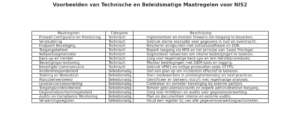Introduction:
Hacking is a broad term that refers to gaining unauthorized access to computer systems or networks. While some forms of hacking are used for positive purposes, such as identifying security vulnerabilities, others are intended for malicious purposes, such as stealing sensitive information.
Let’s look at some of the most common forms of hacking found today.

1. Phishing:
Phishing is one form of hacking in which attackers impersonate legitimate entities, such as banks, social media platforms, or even well-known companies,

to trick users into providing sensitive information such as passwords, credit card data or personal information. This is often done through fake emails, websites or messages that look authentic.
2. Malware:
Malware, an abbreviation for “malicious software,” includes a wide range of malicious programs designed to damage computer systems, steal data or take control of systems without the owner’s consent.

Examples of malware include viruses, worms, Trojan horses and ransomware.
3. DDoS attacks:
A Distributed Denial of Service (DDoS) attack aims to render a computer network, service or website unusable by flooding the target resource with an overwhelming number of requests or traffic, causing the resource to become overloaded and unable to respond to legitimate requests.

If a website or service suddenly becomes slow or inaccessible for no apparent reason, it may indicate a possible DDoS attack. It is important to rule out other possible causes, such as technical problems or network failures, before concluding that a DDoS attack has occurred.
4. Man-in-the-Middle (MitM) attacks:
In MitM attacks, hackers place themselves between the communications of two parties, allowing them to intercept any data exchanged between them. This allows the attacker to steal or even modify sensitive information such as login credentials, credit card information or messages withoutdepartures noticing.

If an attacker stands between the user and the desired website, he can change the URL or domain name to redirect the user to a fake website that resembles the legitimate site. Users should be alert to unexpected changes in the URL or domain name of Web sites they visit.
5. SQL injections:
SQL injections are a common vulnerability in Web applications where attackers insert malicious SQL code into a Web site’s input fields. If the website does not adequately monitor these entries, the attacker can gain access to the website’s database and steal or modify sensitive information.

How can you check this?
Conduct regular security audits and penetration tests on your Web applications to identify and fix any vulnerabilities, including SQL injections. This can be performed by internal security teams or an
external DPO.
6. Social Engineering:
Social engineering is a technique in which hackers use psychological manipulation to trick people into revealing confidential information or performing certain actions.
 This can take place through phone calls, emails, or even face-to-face meetings, and often requires little to no technical skills.
This can take place through phone calls, emails, or even face-to-face meetings, and often requires little to no technical skills.
Conclusion:
There are many forms of hacking that have devastating consequences for individuals, companies and even entire societies. It is therefore vital for individuals and organizations to be aware of the different types of hacking and take proactive measures to protect themselves from potential attacks. By implementing robust security measures, such as regular software updates, appointing a DPO (data protection officer), using strong passwords and investing in security software, we can reduce the risks of hacking and create a safer digital environment for all.









